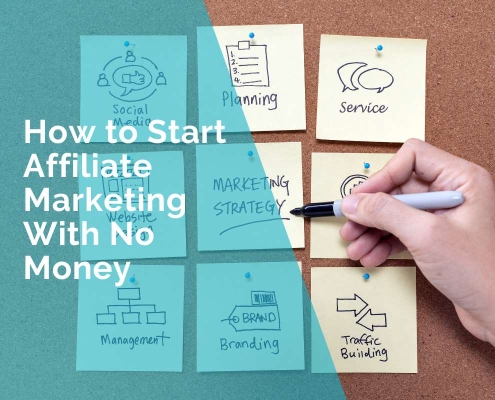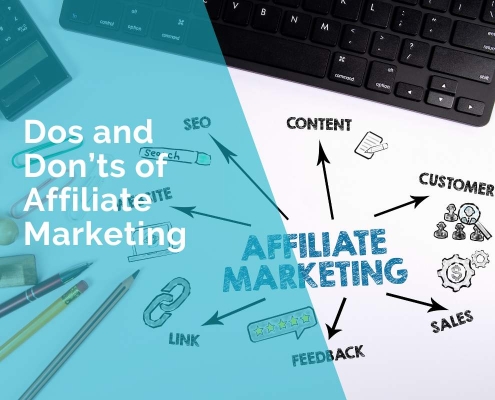Why Your Business Should Have a Logo
Establishing a strong brand identity is crucial for success in today’s competitive business landscape. At the heart of this identity lies a powerful visual element: the logo. Far more than just a simple graphic, a well-designed logo serves as the face of your company, communicating your brand’s essence in a single glance. This article delves into the numerous reasons your business should have a logo and provides actionable steps to help you create an impactful visual identity.
The Power of First Impressions
In business, first impressions matter more than ever. Your logo is often the first point of contact between your brand and potential customers. It’s the visual cue that catches the eye, sparks curiosity, and invites further exploration of your products or services. A thoughtfully designed logo can convey professionalism, reliability, and quality before a word is spoken or read.
Research shows that it takes only 50 milliseconds for people to form an opinion about a website. This snap judgment is largely based on visual appeal, with the logo playing a central role. Investing in a high-quality logo ensures that those crucial first moments work in your favor, setting a positive tone for all future interactions with your brand.
Building Brand Recognition and Recall
One of the primary functions of a logo is to make your brand easily recognizable and memorable. Think of iconic logos like the golden arches of McDonald’s or the simple apple silhouette of Apple Inc. These images are instantly recognizable worldwide, even without accompanying text. This level of brand recognition is a powerful asset in a crowded marketplace.
A study conducted by researchers Lencastre Paulo de, Machado Joana César, and Costa Patrício found that simpler logos are generally more memorable than their complex counterparts. This underscores the importance of creating a logo that is visually appealing and easy to recall. When customers can quickly identify your brand, it builds familiarity and trust, two critical components of long-term business success.
Communicating Your Brand’s Personality and Values
Your logo is a visual shorthand for your brand’s personality and core values. Through careful choice of colors, shapes, and typography, a logo can convey complex messages about your company’s ethos, target audience, and industry positioning. For example, a law firm might opt for a traditional serif font in navy blue to communicate trustworthiness and professionalism. In contrast, a children’s toy company might use bright colors and playful shapes to convey fun and creativity.
Color psychology plays a significant role in logo design. Studies have shown that color can increase brand recognition by up to 80%. Each color evokes specific emotions and associations:
- Blue: Often used by companies in finance, healthcare, and technology, blue is associated with trust, dependability, and strength. It’s a calming color that can make your brand appear more reliable and professional.
- Green: Green is the color of growth, health, and environmental consciousness. It’s commonly used by brands that want to emphasize their connection to nature or their commitment to sustainability.
- Red: Red is a bold, attention-grabbing color that conveys excitement, passion, and urgency. It’s often used by food, entertainment, and retail brands to evoke strong emotions and encourage action.
- Yellow: Symbolizing optimism, clarity, and warmth, yellow is a cheerful color that can make your brand appear more friendly and approachable. It’s frequently used by brands that want to convey a sense of positivity and happiness.
- Purple: Purple is associated with luxury, creativity, and wisdom. It’s a popular choice for brands that want to convey a sense of sophistication or a touch of mystery, making it ideal for industries like beauty, fashion, and high-end services.
Selecting the right color palette for your logo can subtly influence how your brand is perceived and remembered.
Fostering Customer Loyalty
A strong logo helps create an emotional connection between your brand and your customers. When people have positive experiences with your products or services, they begin to associate those good feelings with your logo. Over time, this builds brand loyalty, turning one-time buyers into repeat customers and brand advocates.
This emotional connection can be so powerful that some customers proudly display logos on clothing, accessories, or even as permanent tattoos. While not every business can aspire to this level of brand devotion, it illustrates the potential impact a well-designed logo can have on customer loyalty.
A well-crafted logo not only fosters brand loyalty but also serves as a visual shorthand for your brand’s reputation. Customers encounter your logo repeatedly in various contexts—whether on your website, social media, or product packaging—they are reminded of their positive experiences and the values your brand represents. This consistent reinforcement helps cement your brand’s identity in their minds, making it easier for them to choose your products or services over competitors. In this way, your logo becomes an integral part of your brand’s story, continuously nurturing the relationship between you and your customers.
Standing Out in a Crowded Market
In today’s saturated market, differentiation is key to success. Your logo is a prime opportunity to set yourself apart from competitors. A unique, eye-catching logo can help your business stand out on crowded shelves, in digital marketplaces, or on busy social media feeds.
Consider the rise of minimalist logo design in recent years. As more companies opt for simplified logos, there’s an opportunity to stand out by taking a different approach. Whether through innovative use of negative space, unexpected color combinations, or distinctive typography, your logo can help your brand cut through the noise and capture attention.
Establishing Credibility and Professionalism
A well-designed logo lends an air of legitimacy to your business. It shows that you’ve invested time and resources into your brand identity, signaling to potential customers and partners that you’re serious about your enterprise. This is particularly important for small businesses and startups looking to establish themselves in competitive industries.
Moreover, a professional logo helps build trust with your audience. Consumers are increasingly skeptical of advertising claims, so a polished visual identity can serve as a silent testimonial to your company’s quality and reliability.
Adaptability Across Various Mediums
In our multi-channel world, your brand needs to maintain a consistent presence across a wide range of platforms and mediums. A well-designed logo should be versatile enough to look great, whether it’s on a business card, a billboard, a mobile app icon, or etched into copper signage for your storefront. This adaptability ensures that your brand maintains its impact and recognizability regardless of where customers encounter it.
The Investment Value of a Good Logo
While it’s possible to create a logo on a shoestring budget, investing in professional logo design can yield significant returns. A study by the Design Council revealed that every £1 invested in design can yield over £20 in increased revenues for businesses. This highlights that a well-designed logo is more than just a cost—it’s a strategic investment in your company’s future success.
Actionable Steps for Creating Your Business Logo
Now that we’ve explored the importance of having a logo, let’s look at some practical steps you can take to create an effective visual identity for your business:
- Define Your Brand Identity: Before diving into design, clearly articulate your brand’s values, personality, and target audience. This will guide all subsequent design decisions.
- Research Your Competition: Analyze the logos of your competitors to understand industry trends and identify opportunities to differentiate your brand.
- Choose the Right Logo Type: Decide whether a wordmark, lettermark, symbol, or combination mark best suits your brand’s needs.
- Select Appropriate Colors: Choose a color palette that aligns with your brand personality and resonates with your target audience.
- Consider Typography: If your logo includes text, select fonts that complement your brand’s style and ensure legibility across different sizes and mediums.
- Aim for Simplicity: Remember that simple logos are often more memorable and versatile.
- Ensure Scalability: Your logo should look good, whether it’s on a business card or a billboard.
- Test Your Logo: Gather feedback from your target audience and refine your design based on their input.
- Protect Your Logo: Consider trademarking your logo to prevent unauthorized use once finalized.
- Develop Brand Guidelines: Create a comprehensive guide for how your logo should be used across various applications to ensure consistency.
The Long-Term Impact of a Strong Logo
Your logo becomes an increasingly valuable asset as your business grows and evolves. It serves as a constant amid change, providing a sense of stability and continuity for your customers. Many successful companies have maintained the core elements of their logos for decades, making only subtle updates to keep pace with design trends while retaining their essential brand recognition.
Moreover, a strong logo can open doors to new business opportunities. It can make your brand more attractive for partnerships, licensing deals, or even acquisition. In essence, your logo becomes a visual representation of your company’s goodwill and market position.
Conclusion
In conclusion, a logo is far more than just a decorative element for your business. It’s a powerful tool for building brand recognition, communicating your values, fostering customer loyalty, and establishing your place in the market. Investing time and resources into creating a well-designed logo lays the foundation for long-term business success.
Remember, your logo is often the first and most frequent point of contact between your brand and the world. Make sure it’s telling the story you want to tell. Whether you’re a startup just beginning your branding journey or an established business considering a rebrand, the importance of a strong logo cannot be overstated. Take the time to create a logo that truly represents your brand, and watch as it becomes one of your most valuable business assets.
***
Nicholas Gonzalez












